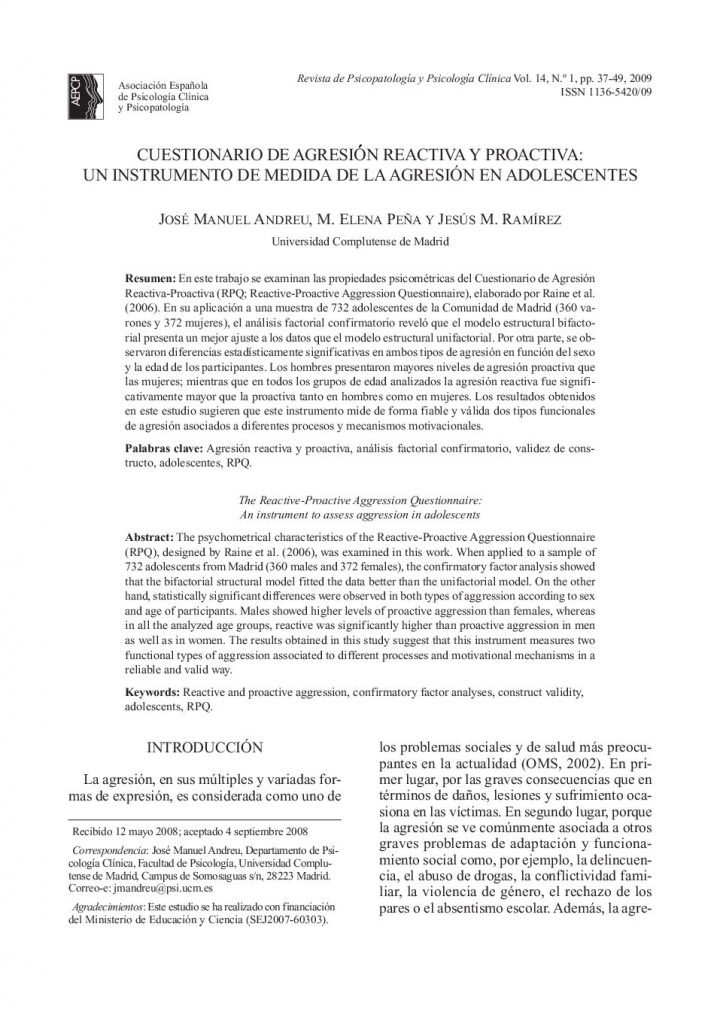Cuestionario de Agresión Reactiva y Proactiva: Un instrumento de medida de la agresión en adolescentes.

- Comorbilidad entre trastornos de conducta y depresión mayor en la adolescencia: prevalencia, teorías explicativas y estatus nosológico.
- Comparación de las puntuaciones del SCL-90-R entre personas con dependencia de la nicotina y personas con dependencia de la cocaína al inicio del tratamiento.
- ¿Por qué los jóvenes se dan atracones de alcohol los fines de semana? estudio sobre creencias y actitudes relacionadas con este patrón de consumo y diferencias de género.
- Cuestionario de Agresión Reactiva y Proactiva: Un instrumento de medida de la agresión en adolescentes.
- Consistencia interparental y su relación con la agresión y la sintomatología depresiva en niños y adolescentes.
The psychometrical characteristics of the Reactive-Proactive Aggression Questionnaire (RPQ), designed by Raine et al. (2006), was examined in this work. When applied to a sample of 732 adolescents from Madrid (360 males and 372 females), the confirmatory factor analysis showed that the bifactorial structural model fitted the data better than the unifactorial model. On the other hand, statistically significant differences were observed in both types of aggression according to sex and age of participants. Males showed higher levels of proactive aggression than females, whereas in all the analyzed age groups, reactive was significantly higher than proactive aggression in men as well as in women. The results obtained in this study suggest that this instrument measures two functional types of aggression associated to different processes and motivational mechanisms in a reliable and valid way.
En este trabajo se examinan las propiedades psicométricas del Cuestionario de Agresión Reactiva-Proactiva (RPQ; Reactive-Proactive Aggression Questionnaire), elaborado por Raine et al. (2006). En su aplicación a una muestra de 732 adolescentes de la Comunidad de Madrid (360 varones y 372 mujeres), el análisis factorial confirmatorio reveló que el modelo estructural bifactorial presenta un mejor ajuste a los datos que el modelo estructural unifactorial. Por otra parte, se observaron diferencias estadísticamente significativas en ambos tipos de agresión en función del sexo y la edad de los participantes. Los hombres presentaron mayores niveles de agresión proactiva que las mujeres; mientras que en todos los grupos de edad analizados la agresión reactiva fue significativamente mayor que la proactiva tanto en hombres como en mujeres. Los resultados obtenidos en este estudio sugieren que este instrumento mide de forma fiable y válida dos tipos funcionales de agresión asociados a diferentes procesos y mecanismos motivacionales.



